Both Shinto shrines and Buddhist temples have long been familiar to Japanese people as spiritual centers. They are places of faith and prayer, and are frequently visited for festivals and annual events. The two religions have been harmonized and accepted without distinction. However, the Meiji government’s decree separating Shintoism and Buddhism led to a clear distinction between the two. This article explains the specific differences between shrines and temples.
Table of Contents
What is Shinto in Japan?: Shinto Shrine and Buddhist Temple
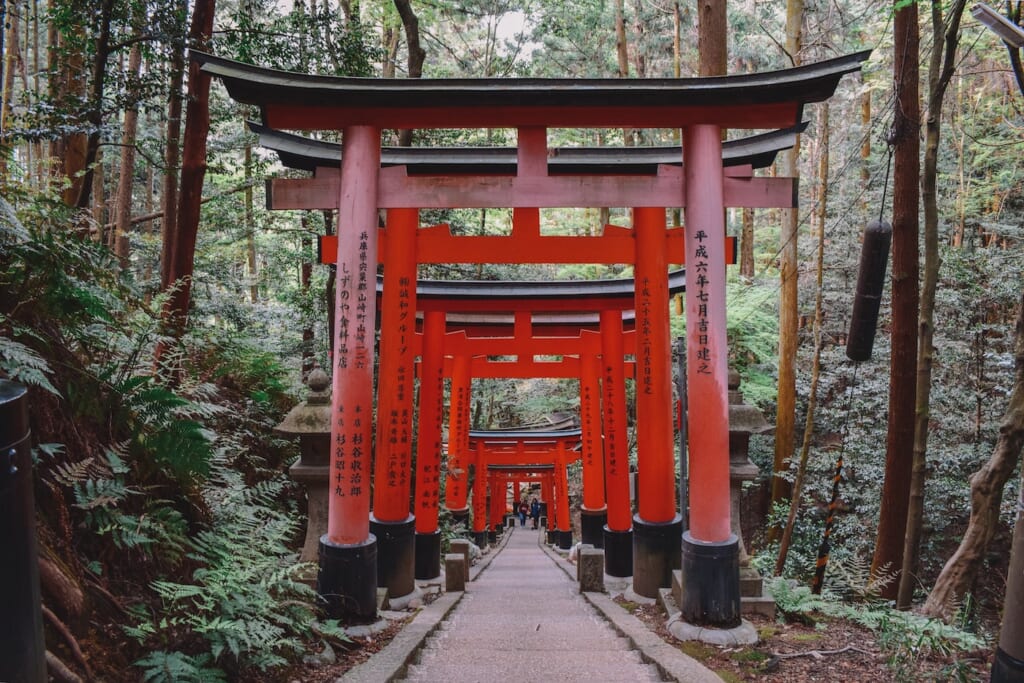
Objects of Faith
Shinto is of Japanese origin. Shinto worships numerous gods, from the gods of mythology and the emperor’s people to warring feudal lords like Nobunaga Oda and Ieyasu Tokugawa, as well as Michizane Sugawara, who was feared as a vengeful spirit after his death.
This idea is due to the fact that people originally had a culture of worshipping and respecting nature.
Therefore, Shinto used nature itself, such as mountains, rocks, and waterfalls, as its deities, and even today there are still rocks and trees wrapped with shimenawa (sacred straw ropes).
Mirrors, swords, and sacred stones, in which deities are believed to reside, are derived from mythology. These sacred objects are generally kept out of sight and enshrined in the back of the shrine, as they are considered sacred.
It is not unusual to find several deities enshrined in a single shrine. Among them, Amaterasu Omikami, the ancestral deity of the Emperor family, is generally regarded as the supreme deity.
Shinto also has a strong sense of ancestor worship. Japanese go visit their family tomb every once in a while to connect with their ancestors.
Since Shinto does not have a founder and it doesn’t have fixed teachings that must be followed, the word “道 (way)” is used instead of “教 (teaching)”.
Shinto: Overview of Japanese Indigenous Religion
What is Buddhism in Japan?: Shinto Shrine and Buddhist Temple
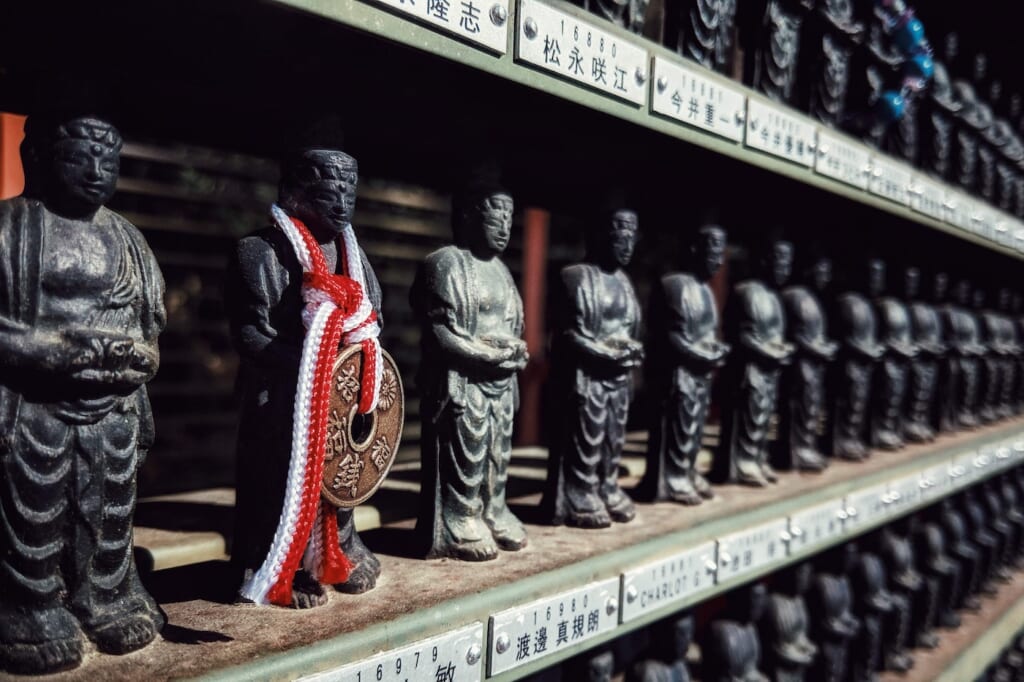
Objects of Faith
The original Buddhism was the thought of the Buddha in India, which came to Japan around the 6th century via China. Buddha took human lives as suffering.
And he believed that by practicing Buddhism and becoming enlightened, one could escape from the cycle of reincarnation.
It has a sense of “cause and effect,” meaning that one’s own actions determine one’s present suffering and happiness, and that one’s present actions determine one’s future suffering and happiness.
In other words. suffering is not inflicted on you by someone else but is caused by your own thoughts and deeds.
In the beginning, Buddha statues didn’t exist. Yet, several hundred years after the death of the founder Buddha, illustrations and statues were created with the intention of making the Buddha’s teachings easier to understand.
The word “Buddha” implies someone enlightened. Buddha images such as Shakyamuni Buddha and Dainichi Nyorai, which people worship at temples, are enlightened beings.
The Amida Nyorai is considered to have the highest rank among the Buddhas.
The reason why Japan accepted foreign Buddhism was because of the belief that following the Buddha Dharma would protect and pacify the country. For this reason, people built temples as places of prayer.
In the temple, people could make a prayer of profit in this life. Besides benefits in this life, one can also pray for a place to go to the Pure Land of Paradise after death.
Unlike Shinto, the object of worship, the Buddha, is enshrined in a visible place. In temples, Buddhas such as Shakyamuni Buddha and Kannon Bosatsu are enshrined. The most important Buddha in a temple is called “honzon,” or “principal image”.
People face the visible Buddha image, put their hands together, and worship. However, there are some hidden Buddha images that are not open to the public.
Types of Buddhism Developed in Japan: End of the World Belief, Pure Land, and Zen
Japanese Buddhism in Early Stage: Only for the Elites and the State
Definition of Shinto Shrine and Buddhist Temple: Different Architecture
Shinto Shrine
In ancient times, shrines played an important role in the government, i.e., the peaceful governance of the world. Shrines were at the center of matsurigoto (government), and the chief of each clan played an important role as the person who worshipped the guardian gods of one’s resident area.
Shrines consisted mainly of three parts: torii (gateway to the shrine), approach, and shrine pavilions.
Thus, since most shrines have torii gates, it is one of the main features that distinguish them from temples. The torii serves as a boundary between the sacred realm where the deity resides and the world where people live.
In many cases, guardian dogs or foxes are placed on both sides of the entrance.
The main shrine building is divided into a hall of worship and the main shrine building. The main shrine building houses the sacred object, which is not visible to the public.
The architecture of shrines is relatively simple and delicate compared to that of temples, with many structures made of natural materials such as thatch, hiwada (cypress bark), and kokera (wood shingles).
Most shrines are named after the deities they enshrine.
Shinto Shrine: Layout, History, and Functions
Buddhist Temple
On the other hand, Buddhist institutions are temples.
Temples were introduced from Baekje to the Japanese Imperial Court in the mid-6th century and came to function as political and power apparatuses.
Temples often have a San-mon (gateway) to the temple and statues of Niou Guardians enshrined in the gateway. The name “San-mon” comes from the fact that the temple was originally built on a mountain.
Additionally, temples have a Dharma hall where monks give sermons, a Kondo hall where the principal image of Buddha is enshrined, and a stupa representing the Buddha.
The roofs of temples are often tiled, and the decorations are gaudy and massive.
Temples are divided into two parts: the monks’ quarters, where those seeking enlightenment live, and the place, where teachings are given to the general public.
People call this place a lecture hall, which is usually built behind the Kondo.
Different Roles: Shinto Shrine and Buddhist Temple
Shinto
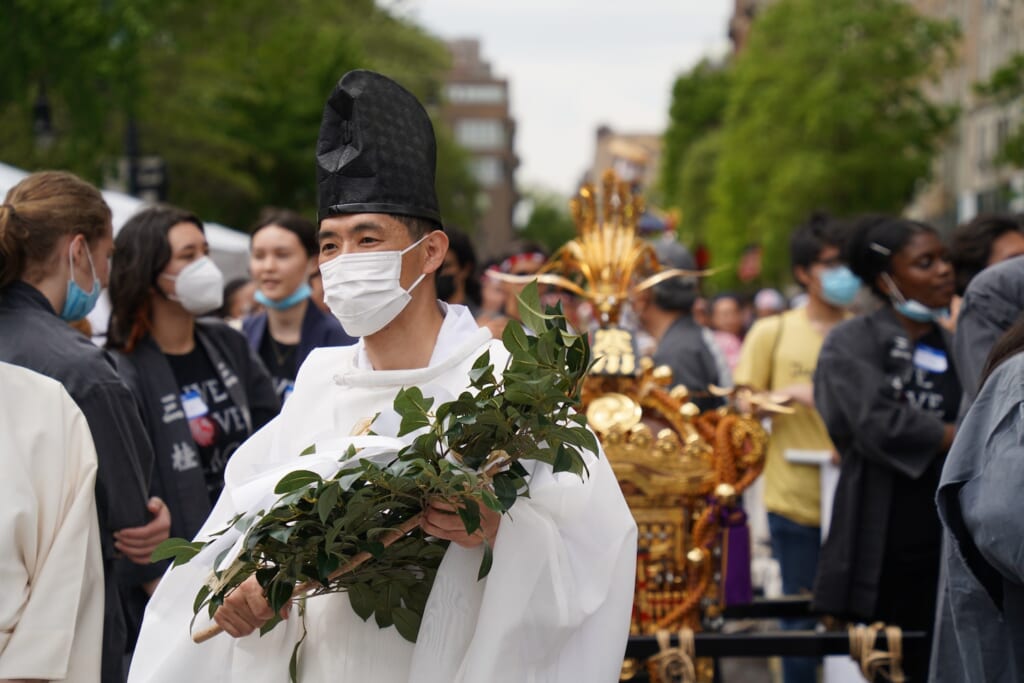
Those who serve the gods at shrines are called “Shinshoku” or “Kan-nushi” (priests or priestesses). Among them, the person in charge of the shrine is called “Guji” (the chief priest).
The work of the priesthood includes rituals, the clerical business of a Shinto shrine, and performing prayers at shrines.
Besides, women called miko (shrine maidens) assist the priests and perform kagura dances and other rituals at Shinto ceremonies.
Since Shinto has no verbalized doctrine, there are no scriptures. Therefore, they do not preach like priests at temples.
However, they do recite “norito” or prayers of thanksgiving, to convey their wishes to the gods.
Buddhism
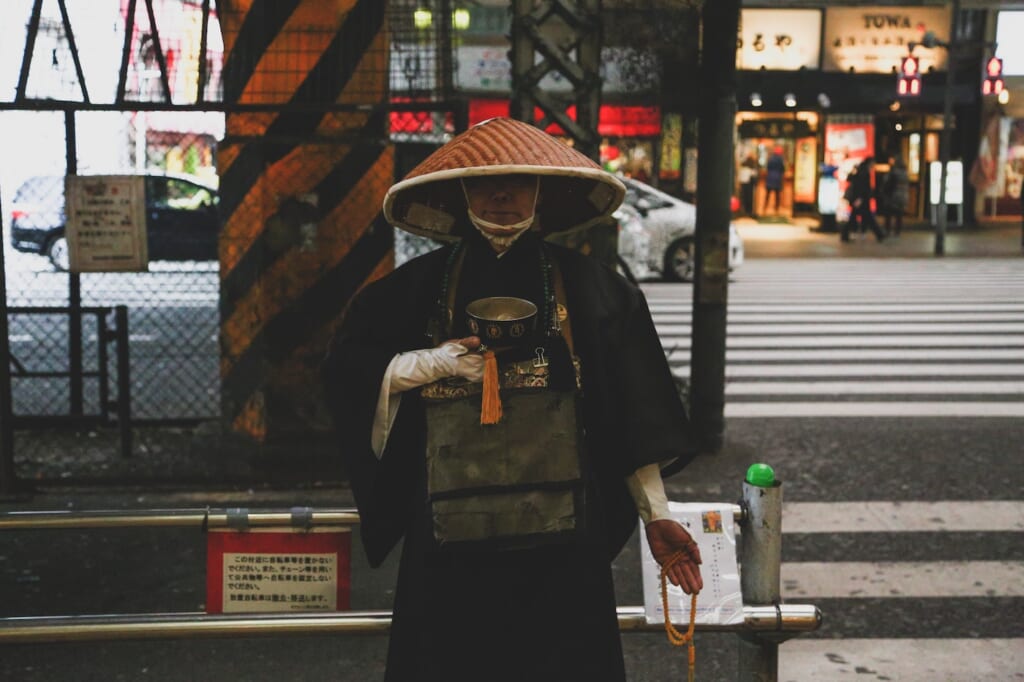
In Buddhism, on the other hand, the priest is a monk, and his main role is to preach teachings. Let alone his training to be enlightened.
Monks also give sutras at funerals and manage temples and cemeteries. Sutras are scriptures that record the teachings of Buddha.
They are generally called “Obo-san” (monks). Especially, people call the one who preaches the teachings “Osho” (honorific title of chief monk). Those who live and work in temples are called “Jushoku” (chief monk). Female monks are called “Ama” (nuns).
Scenes in Life Rituals
Shrines and temples are deeply involved in the rituals of life, not only in Hatsumode, when many Japanese visit shrines or temples on New Year’s Day.
Shinto
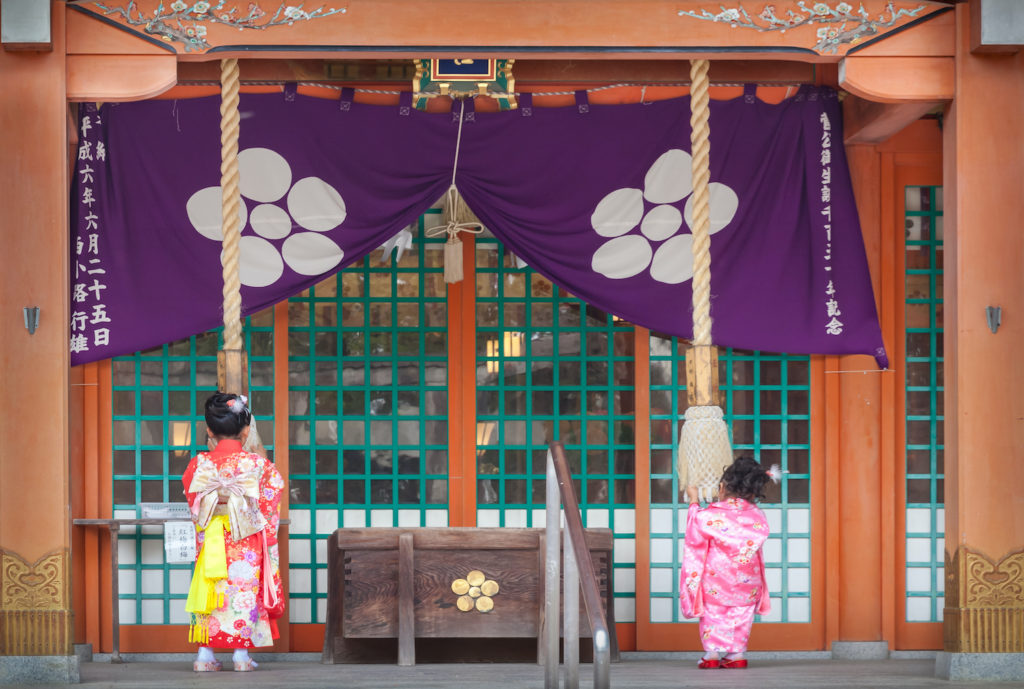
Shrines are often visited mainly for celebratory occasions. For example, the first visit to a shrine to report the birth of a child, the Shichi-Go-San to celebrate the child’s growth, and the Shinto wedding ceremony. Shinto weddings are also held at shrines.
Shrines are places that support life’s celebrations, and this is based on Shinto beliefs.
Therefore, funerals are basically not held in Shintoism, which abhors death as an impurity.
Shinto Beliefs: 5 Core Values of Japanese Indigenous Religion
Buddhism
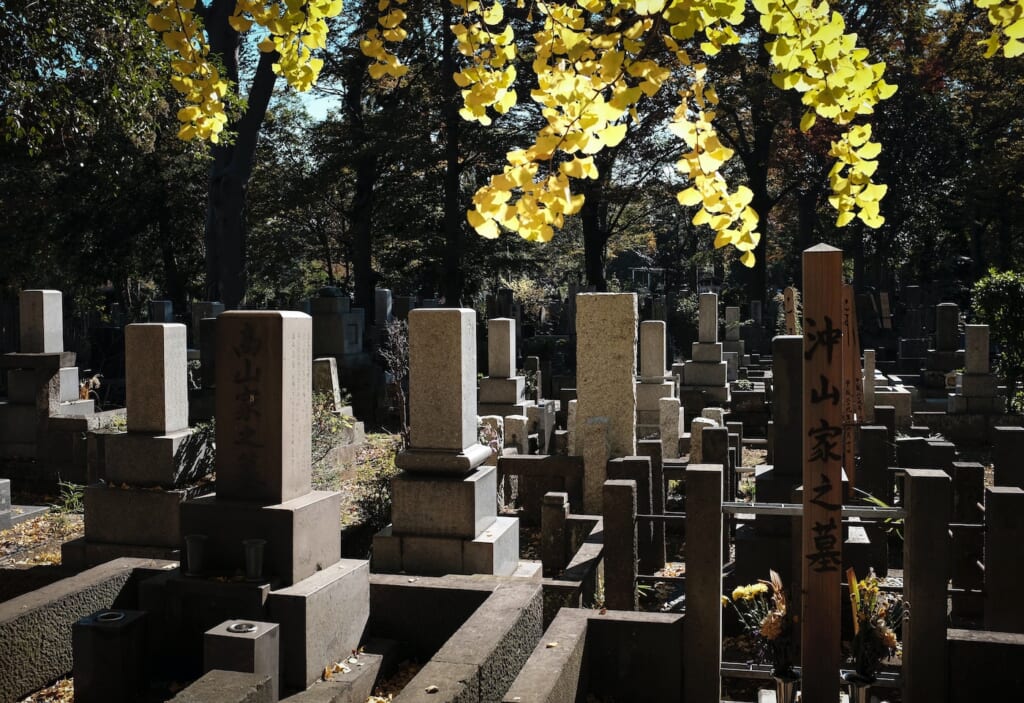
On the other hand, temples handle death, the end of life.
Monks perform funeral rites and administer people’s graves.
It is a common practice that people to take their families to temples to visit graves during Obon and Ohigan. Obon and Ohigan are annual Buddhism events for commemorating one’s ancestors.
Also, people visit their family graves to report one’s life events or significant changes to their ancestors.
However, although not as common as Buddhism, Shintoism also has a funeral service called a shinso-sai, and Buddhism also has a wedding ceremony called a butsuzen-shiki.
These facts represent how Shinto and Buddhism have been intertwined.
Differences in Worship Methods: Shinto Shrine and Buddhist Temple
First of all, pets are not allowed together in both shrines and temples. Eating and drinking are also prohibited.
As for clothing, shorts, camisoles, sandals, and the like are not appropriate, and proper attire for meeting a respectful person is suitable.
Shinto Shrine
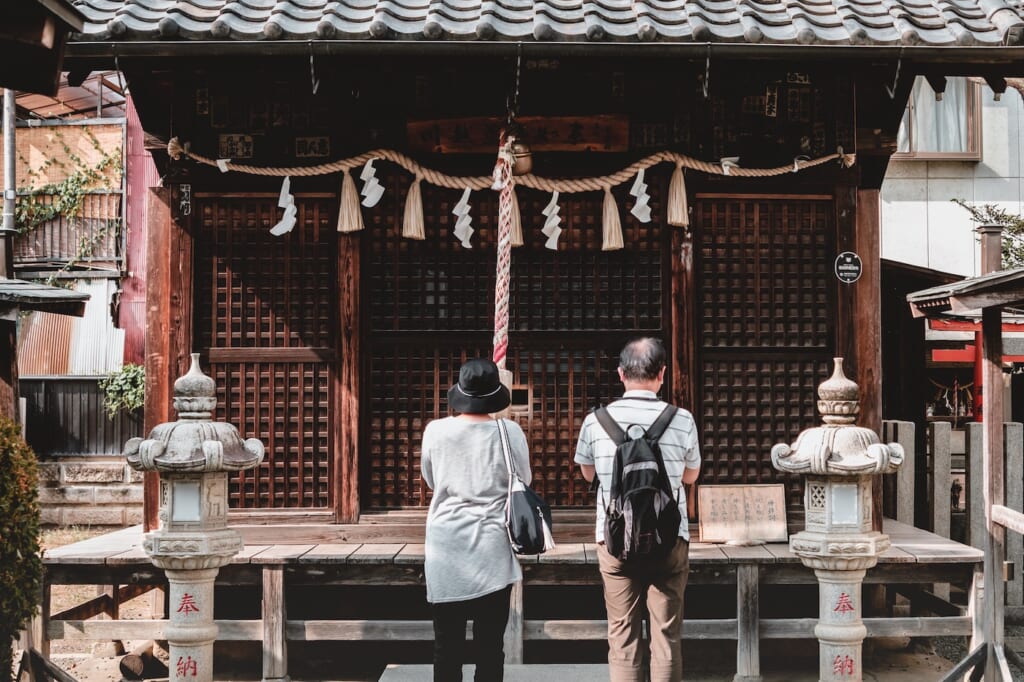
At shrines, one should bow at the torii gate first. (At the end of the visit, when you reach the torii, you should also bow to the main shrine building.)
Wash your hands and rinse your mouth at the hand basin. This is a simplified version of misogi (cleansing), an important Shinto ritual.
The approach to the shrine should be on the right or left side of the path, not in the middle, as this is the path of the gods.
After arriving at the hall of worship and offering money, bow twice, clap your hands twice, and bow one last time.
The important thing at this time is to offer a heart of gratitude and thanksgiving.
Buddhist Temple
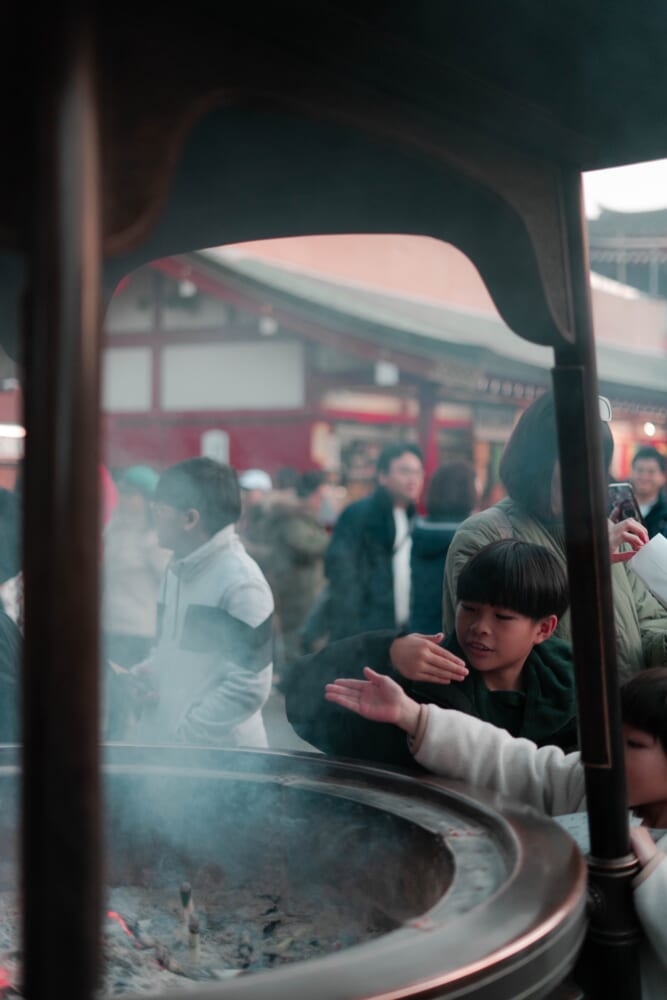
At temples, one should first bow at the gate, which is the entrance to the temple. Step over the threshold of the gate without stepping on it.
As at shrines, purify your mouth and hands at the hand-watering fountain.
If there is an incense burner on the way to the main hall, bathe in its smoke to purify your mind and body.
After arriving at the main hall and offering money, clasp your hands together in front of your chest. No Kashiwa-de (clapping hands) is used as in shrines.


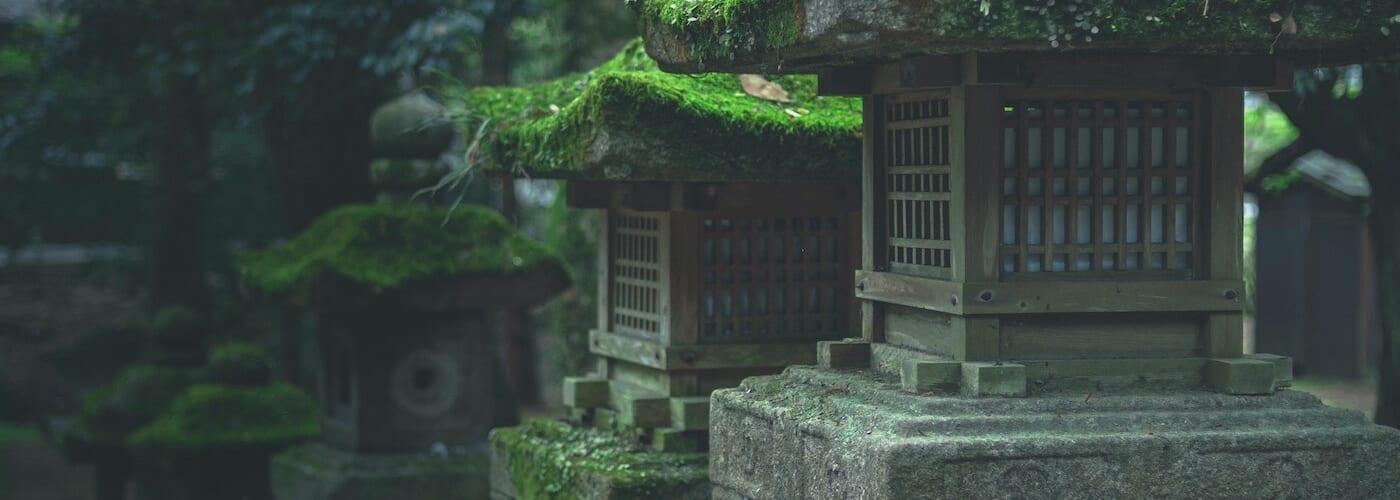
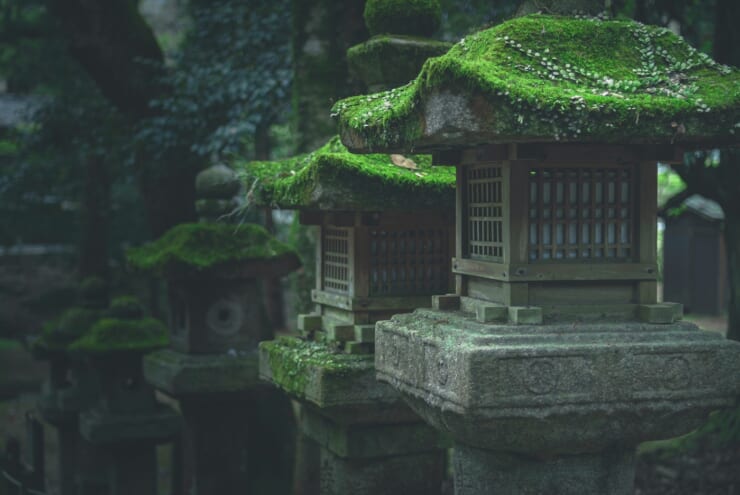
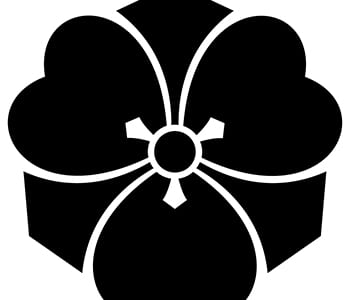
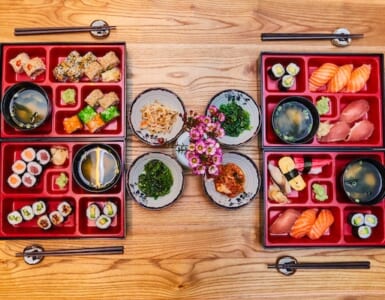
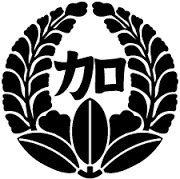


Add comment